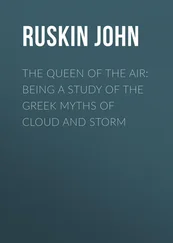George Dodd - The History of the Indian Revolt and of the Expeditions to Persia, China and Japan 1856-7-8
Здесь есть возможность читать онлайн «George Dodd - The History of the Indian Revolt and of the Expeditions to Persia, China and Japan 1856-7-8» — ознакомительный отрывок электронной книги совершенно бесплатно, а после прочтения отрывка купить полную версию. В некоторых случаях можно слушать аудио, скачать через торрент в формате fb2 и присутствует краткое содержание. Жанр: foreign_antique, foreign_prose, на английском языке. Описание произведения, (предисловие) а так же отзывы посетителей доступны на портале библиотеки ЛибКат.
- Название:The History of the Indian Revolt and of the Expeditions to Persia, China and Japan 1856-7-8
- Автор:
- Жанр:
- Год:неизвестен
- ISBN:нет данных
- Рейтинг книги:3 / 5. Голосов: 1
-
Избранное:Добавить в избранное
- Отзывы:
-
Ваша оценка:
- 60
- 1
- 2
- 3
- 4
- 5
The History of the Indian Revolt and of the Expeditions to Persia, China and Japan 1856-7-8: краткое содержание, описание и аннотация
Предлагаем к чтению аннотацию, описание, краткое содержание или предисловие (зависит от того, что написал сам автор книги «The History of the Indian Revolt and of the Expeditions to Persia, China and Japan 1856-7-8»). Если вы не нашли необходимую информацию о книге — напишите в комментариях, мы постараемся отыскать её.
The History of the Indian Revolt and of the Expeditions to Persia, China and Japan 1856-7-8 — читать онлайн ознакомительный отрывок
Ниже представлен текст книги, разбитый по страницам. Система сохранения места последней прочитанной страницы, позволяет с удобством читать онлайн бесплатно книгу «The History of the Indian Revolt and of the Expeditions to Persia, China and Japan 1856-7-8», без необходимости каждый раз заново искать на чём Вы остановились. Поставьте закладку, и сможете в любой момент перейти на страницу, на которой закончили чтение.
Интервал:
Закладка:
Not only is the headman’s position and duties defined; but the whole village may be said to be socially organised and parcelled out by the singular operation of the caste principle. Each village manages its internal affairs; taxes itself to provide funds for internal expenses, as well as the revenue due to the state; decides disputes in the first instance; and punishes minor offences. Officers are selected for all these duties; and there is thus a local government within the greater government of the paramount state. One man is the scribe of the village; another, the constable or policeman; a third, the schoolmaster; a fourth, the doctor; a fifth, the astrologer and exorciser; and so of the musician, the carpenter, the smith, the worker in gold or jewels, the tailor, the worker in leather, the potter, the washerman – each considers that he has a prescriptive right to the work in his branch done within the village, and to the payment for that work; and each member of his family participates in this prescriptive right. This village-system is so interwoven with the habits and customs of the Hindoos, that it outlives all changes going on around. Sir T. Metcalfe, who knew India well, said: ‘Dynasty after dynasty tumbles down; revolution succeeds to revolution; Hindoo, Patan, Mogul, Mahratta, Sikh, English, are all masters in turn; but the village community remains the same. In times of trouble they arm and fortify themselves. If a hostile army passes through the country, the village communities collect their cattle within their walls, and let the enemy pass unprovoked. If plunder and devastation be directed against themselves, and the force employed be irresistible, they flee to friendly villages at a distance; but when the storm has passed over, they return and resume their occupations. If a country remain for a series of years the scene of continued pillage and massacre, so that the village cannot be inhabited, the scattered villages nevertheless return whenever the power of peaceable possession revives. A generation may pass away, but the succeeding generation will return. The sons will take the places of their fathers; the same site for their village, the same positions for the houses, the same lands will be reoccupied by the descendants of those who were driven out when the village was depopulated; and it is not a trifling matter that will drive them out, for they will often maintain their post through times of disturbance and convulsion, and acquire strength sufficient to resist pillage and oppression with success. This union of the village communities, each one forming a separate little state in itself, has, I conceive, contributed more than any other cause to the preservation of the people of India through all the revolutions and changes which they have suffered.’ 15 15 Report of Select Committee of House of Commons, 1832.
It is easily comprehensible how, in village communities thus compactly organised, the course of proceeding adopted by the headman in any public exigency becomes of much importance; since it may be a sort of official manifestation of the tendencies of the villagers generally.
CHAPTER VIII.
TREACHERY AND ATROCITIES AT CAWNPORE
No other events connected with the Revolt in India made so deep an impression on the public mind, or produced so utter an astonishment and dismay, as those relating to Cawnpore – the treachery of an arch-villain, and the sufferings that resulted therefrom. The mystery that for so many weeks veiled the fate of the victims heightened the painful interest; for none in England knew how the troubles in May gave rise to the miseries in June, and these to the horrors of July, until nearly all were dead who could faithfully have recorded the progress of events. Now that the main incidents are known, they come upon the reader almost with the force of a tragic drama; associating themselves in succession with five scenes – the intrenchment, the boats, the ghat, the house of slaughter, the well – the intensity deepening as the plot advances towards its end.
So unutterably revolting were the indignities to which some of the unfortunates were subjected, at Cawnpore as at other places, that no one dared to speak or write fully of them; even men, hardy and world-worn men, almost shrank from whispering the details to each other. Vague generalities of language were employed, in sheer dismay lest the use of precise words should lift too high the veil that hid the hideous scene. So much was this felt, so much were the facts understated, that persons of unblemished moral character almost regretted the reticence of the press. A nobleman held in very high estimation, the Earl of Shaftesbury, on one occasion expressed at a public meeting a wish that the daily journals would proceed one stage further in making the mournful tale known: on the ground that Englishmen, by learning more of the real truth, would appreciate more fully the sufferings of our countrymen and countrywomen, the heroism and Christian patience with which those sufferings were borne, and the necessity for (not vengeance, but) retributive justice on those who had ordered and executed the devilish barbarities. It is not a trifling compliment to the delicacy of the English press, that a Christian nobleman should thus have suggested less scruple, less reserve, in the treatment of a most trying subject. In every narrative of these mournful events, the reader feels, and must continue to feel, that the worst is left unsaid.
The first matters to treat are – the locality in which, and the native chieftain by whom, these wrongs were inflicted. Cawnpore, a terrible word to English readers, is the name both of a district and of its chief town. The district, a part of the Doab or delta between the Ganges and the Jumna, is included within the government of the Northwestern Provinces. The city of Cawnpore is on the right bank of the Ganges, about two hundred and seventy miles below Delhi; and the river flows down nearly a thousand miles below this point to Calcutta; the land-distance, however, from Cawnpore to Calcutta is between six and seven hundred miles. The Ganges here is sometimes more than a mile in width at and soon after the rainy season, and is at such time very difficult to be crossed by bodies of troops. Cawnpore is an important city to the British in India, both commercially and in a military sense. The ghat or landing-place, in peaceful times, is a scene of great liveliness and bustle. When Skinner was there, ‘Every description of vessel that can be imagined was collected along the bank. The pinnace, which with its three masts and neat rigging might have passed for a ship; budgerows, the clumsiest of all clumsy things, with their sterns several times higher than their bows; the bauleahs, ugly enough, but lightly skimming along like gondolas compared with the heavy craft around them; the drifting haystacks, which the country-boats appear to be when at a distance, with their native crews straining every nerve upon their summits, and cheering themselves with a wild and not unfrequently a sweet song; panswees shooting swiftly down the stream, with one person only on board, who sits at the head, steering with his right hand, rowing with his foot, and in the left hand holding his pipe. A ferry-boat constantly plying across the stream adds to the variety of the scene, by its motley collection of passengers – travellers, merchants, fakeers, camels, bullocks, and horses – all crowded together. The vessels fastened to the shore are so closely packed, that they appear to be one mass, and, from their thatched roofs and low entrances, might easily pass for a floating village.’ Cawnpore is (or rather was) remarkable in its military arrangements. The cantonment, six miles long by half a mile broad, often contained, before the Revolt, a native population of fifty thousand persons, besides sixty thousand in the city itself, irrespective of military and Europeans. The native infantry of the station encamped here in the cool part of the year, when there were regular streets and squares of canvas stretching over an immense space; each regiment was provided with its bazaar; in the rear and far beyond the lines, were the bivouacs of every kind of camp-followers, in immense numbers. All these, with many hundred bungalows or lodges of officers and European residents, gave great animation to the cantonment. The bungalows, though tiled or thatched, were here, as in other parts of India, large and commodious; each standing pleasantly in the midst of its compound or enclosure, richly planted with grapes, peaches, mangoes, shaddocks, plantains, melons, oranges, limes, guavas, and other fruits especially acceptable in a hot climate. There was accommodation for seven thousand troops, but the number actually stationed there was generally much less. In accordance with the Company’s regulations, the English military officers, whether of European or native regiments, always resided within the cantonment where their services were required; while the civilians, although residing chiefly in the suburbs, had their offices and places of business within the city itself. There were thus, to some extent, two sets of English residents.
Читать дальшеИнтервал:
Закладка:
Похожие книги на «The History of the Indian Revolt and of the Expeditions to Persia, China and Japan 1856-7-8»
Представляем Вашему вниманию похожие книги на «The History of the Indian Revolt and of the Expeditions to Persia, China and Japan 1856-7-8» списком для выбора. Мы отобрали схожую по названию и смыслу литературу в надежде предоставить читателям больше вариантов отыскать новые, интересные, ещё непрочитанные произведения.
Обсуждение, отзывы о книге «The History of the Indian Revolt and of the Expeditions to Persia, China and Japan 1856-7-8» и просто собственные мнения читателей. Оставьте ваши комментарии, напишите, что Вы думаете о произведении, его смысле или главных героях. Укажите что конкретно понравилось, а что нет, и почему Вы так считаете.












